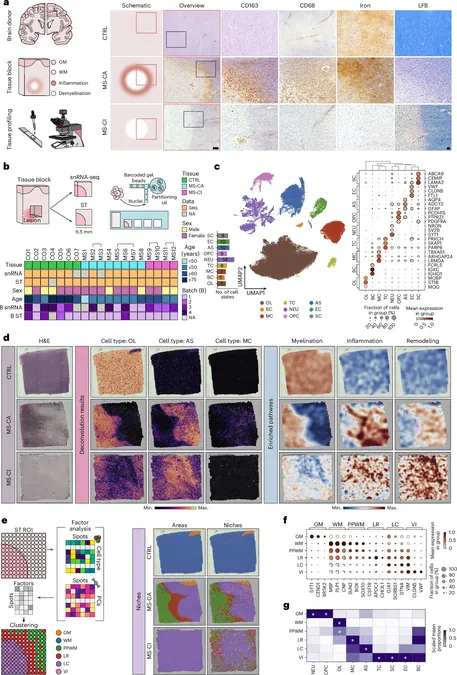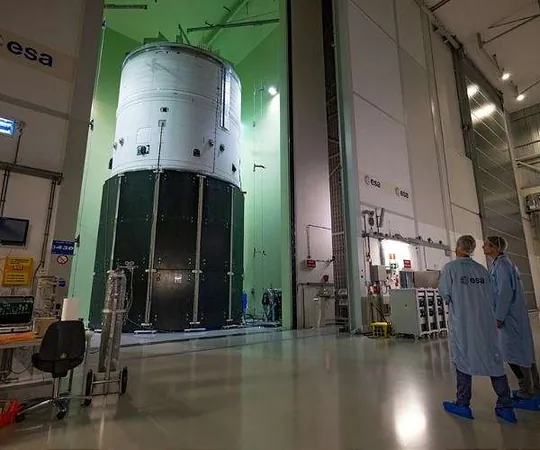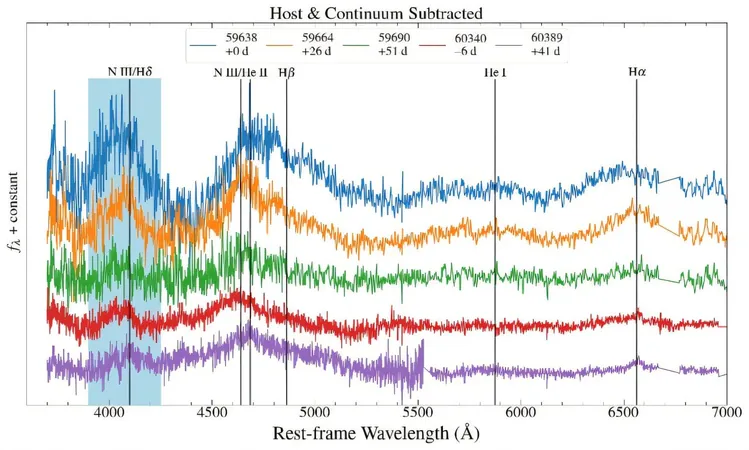
Groundbreaking Research Unveils New Cell Interactions in Multiple Sclerosis – A Turning Point for Treatment?
2024-11-14
Author: Yu
Innovative Research Team and Study Overview
An innovative international research team, spearheaded by prominent scientists Professor Dr. Lucas Schirmer and Professor Dr. Julio Saez-Rodriguez from the Mannheim and Heidelberg Medical Faculties of Heidelberg University, has shed light on the intricate cellular dynamics within subcortical lesions of multiple sclerosis (MS). This pivotal study, recently published in Nature Neuroscience, offers profound insights into how specific cell types and their interactions contribute to the progression of this debilitating disease.
Understanding Multiple Sclerosis
Multiple sclerosis is a chronic and inflammatory condition that inflicts long-term damage to the central nervous system, primarily because the immune system mistakenly attacks healthy nerve tissue. The disease manifests itself through the formation of multiple lesions across various neural regions, initially presenting as inflammatory but evolving into chronic forms over time. This research highlights the critical 'chronic-active intermediate stage,' characterized by lesions encircled by inflamed tissue, often littered with iron deposits that signal a failure of repair mechanisms.
Methodology and Technological Advances
Utilizing cutting-edge spatial and single-cell nuclear transcriptome technologies, the researchers meticulously mapped the cellular composition and signaling pathways within damaged tissues. This methodological advancement allowed them to conduct in-depth analyses of cell interactions in both MS-affected and healthy control tissues. Notably, they zoomed in on specialized microenvironments around blood vessels that are crucial for immune cell migration—a key factor in the inflammation process.
Key Findings and Implications
Among their remarkable discoveries was a distinct type of astrocyte, yet to be fully characterized, found in the inflamed lesions. The interactions between myeloid, endothelial, and glial cells within the inflamed rims of these lesions were particularly emphasized, revealing the complexity of cellular communications that significantly impact lesion development.
'This research provides a striking illustration of how different cellular environments evolve at various stages of MS lesions,' stated the study’s first authors, Celia Lerma Martin and Pau Badia i Mompel. With this enhanced understanding, the researchers believe they can develop targeted therapies that specifically address the unique cell types and their interactions within various tissue niches—a potential game changer in MS treatment strategies.
Challenges Faced During Research
The research team faced substantial challenges due to the vast amounts of data generated, necessitating advanced bioinformatics techniques. 'Integrating and analyzing these large transcriptome data sets required the development and application of sophisticated computational methods,' explained Professor Saez-Rodriguez.
Conclusion and Future Directions
This groundbreaking endeavor took place within the Division of Neuroimmunology at the UMM, closely collaborating with various other research groups in Vienna, Heidelberg, and Mannheim, marking a significant step forward in understanding multiple sclerosis. As MS continues to affect countless lives globally, the findings from this study could pave the way for revolutionary therapeutic approaches, potentially changing the trajectory of treatment for this complex disease.






 Brasil (PT)
Brasil (PT)
 Canada (EN)
Canada (EN)
 Chile (ES)
Chile (ES)
 España (ES)
España (ES)
 France (FR)
France (FR)
 Hong Kong (EN)
Hong Kong (EN)
 Italia (IT)
Italia (IT)
 日本 (JA)
日本 (JA)
 Magyarország (HU)
Magyarország (HU)
 Norge (NO)
Norge (NO)
 Polska (PL)
Polska (PL)
 Schweiz (DE)
Schweiz (DE)
 Singapore (EN)
Singapore (EN)
 Sverige (SV)
Sverige (SV)
 Suomi (FI)
Suomi (FI)
 Türkiye (TR)
Türkiye (TR)